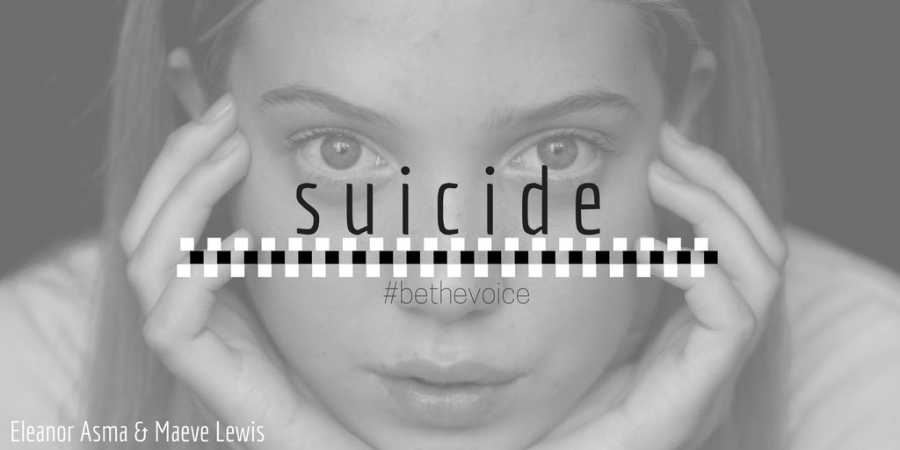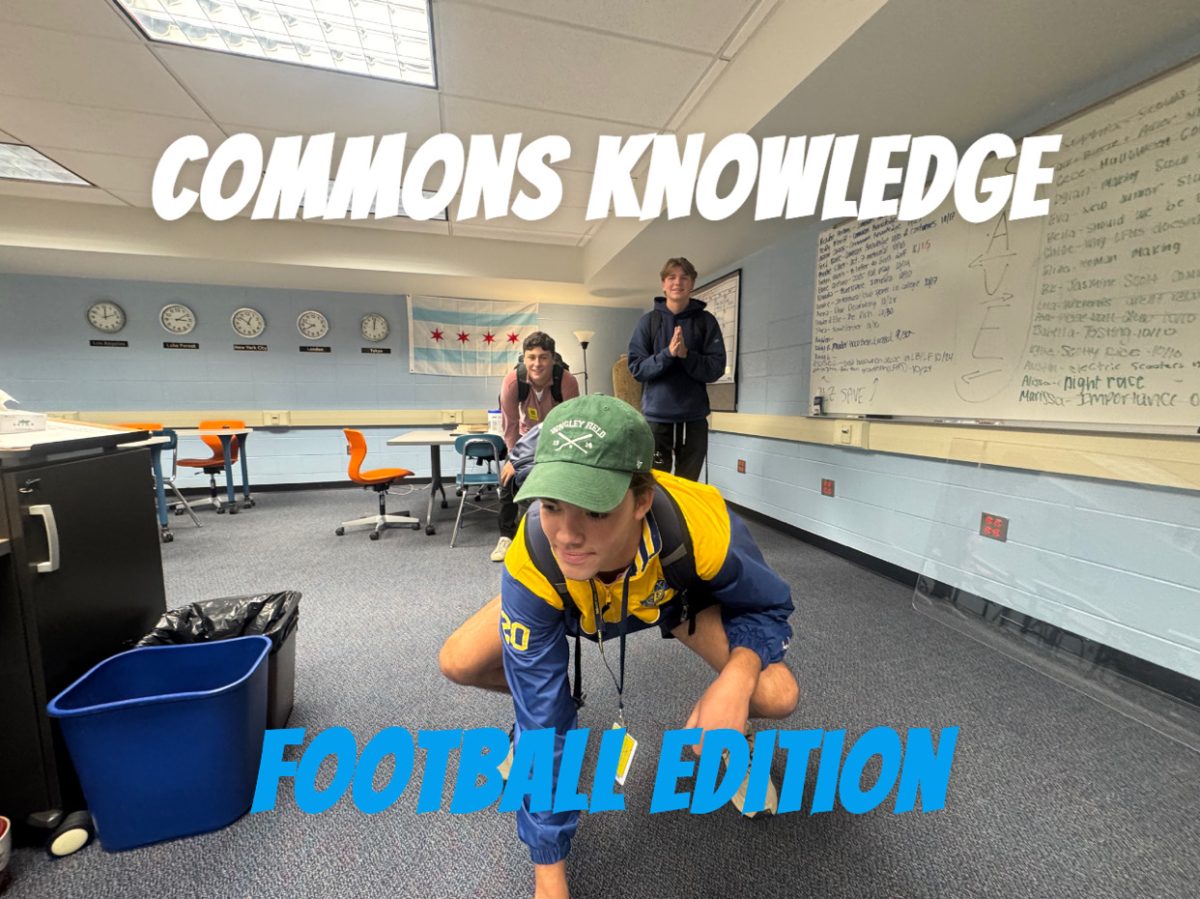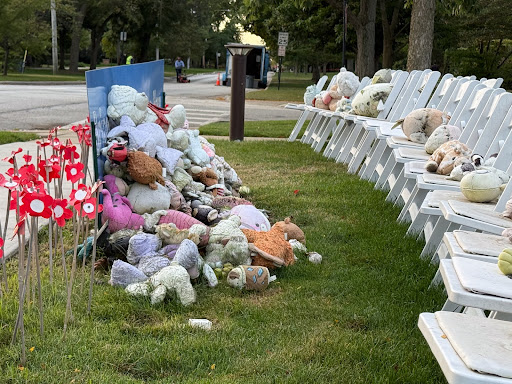This article was co-written by Maeve Lewis and Eleanor Asma.
Walk to Save Lives
“There is no suffering greater than that which drives people to suicide; suicide defines the moment in which mental exceeds the human capacity to bear it. It represents the abandonment of hope.” – John T. Maltsberger M.D.
Suicide.
The word itself is difficult to say and only brought up in quiet conversations amongst a select few. The stigma against mental health issues– suicide in particular–neglects the subject and pushes it under the rug. Society today ignores that it is an actual, prevalent, and pressing issue, especially for the younger generation. In fact, among youth, the ratio of suicide attempts to deaths is estimated to be about 25:1, whereas it is 4:1 amongst the elderly. It is clear that muffling the conversations about personal topics like suicidal ideation, bulimia, anorexia, self harm, PTSD, substance abuse, sexual assault, physical abuse, and harassment does nothing but fuel the behaviors and veer away from initiating vital conversations to encourage kids to seek help.
Close to one million people attempt suicide each year. That’s an attempt taking place every minute, a death every 13.3 minutes, and a total of around 39,500 deaths annually. The harsh realities of mental illnesses and suicide can be such a distant concept that is difficult to understand. It isn’t until one personally experiences the detrimental and heartbreaking effects of suicide that they begin to realize its significance in today’s society.
 There are a variety of methods that are commonly used in suicide attempts, but among them all, the use of a firearm, poisoning, and suffocation are the most common.
There are a variety of methods that are commonly used in suicide attempts, but among them all, the use of a firearm, poisoning, and suffocation are the most common.
Yes, people die by suicide; however, that is not the cause of their death. It is important to note that suicide is not the cause of death but the effect of the struggles that one faces. Rather, it is the days, weeks, months, or years of suffering that ultimately pushes one to feel as though suicide is the best or only option. A variety of mental illnesses and suicide are commonly linked. While the two often coincide, not every case of depression leads to suicide or suicidal thoughts.
It is of the utmost importance to be aware of the signs that lead to an unhealthy mental state or thoughts of suicide. Those who experience different obstacles in their lives are at a higher risk of developing a mental illness.
Risk Factors:
- One or more prior suicide attempts
- Family history of mental disorder or substance abuse
- Family history of suicide
- Family violence
- Physical or sexual abuse
- Keeping firearms in the home
- Chronic physical illness, including chronic pain
- Exposure to the suicidal behavior of others
Often times suicide attempts will go unreported or untreated. At least one million people in the U.S. each year engage in intentionally inflicted self-harm, and approximately 117 Americans take their own life every day.
Warning Signs:
- Isolating one’s self
- Losing interest in things one used to care about
- Feeling hopeless, worthless, and helpless
- Saying/thinking things like “It would be better if I wasn’t here” or “I can’t do it anymore”
- Always talking or thinking about death
- Trouble sleeping and eating
- Having a “death wish,” by tempting fate and taking risks that could lead to death, such as driving fast or running red lights
- Talking about suicide or killing one’s self
- Writing, visiting or calling people to say goodbye
- Self harm: cutting, scratching, burning, hitting/punching, pulling hair
- Substance abuse: drugs, alcohol, etc.
It is important to know that you are no less of a person, nor are you a burden to anyone if you express these thoughts to others. People going through this kind of pain often think their loved ones would be better off without them. But, the ones you love will be grateful that you chose to save yourself.
Those who are experiencing the affects of mental illness want help and don’t know how to ask for it, or they don’t realize the abnormality of their actions and mindset. If you or someone you know may be feeling strong thoughts of suicide, self-harm, or worthlessness, it is extremely important to let an adult know. Do not try to become a therapist for your friend if you notice they are struggling. Professional support is necessary to properly improve a mental illness or unhealthy behaviors. Suicidal thoughts and actions need to be taken very seriously. The American Foundation of Suicide Prevention’s notes that nearly 90% of people who commit suicide have a diagnosable psychiatric disorder at the time of their death.
 When people work together, big changes can be made in this world. As we try to break the stigma of mental health issues in our community, the Out of the Darkness suicide prevention walk that took place on Saturday, September 23rd through Grant Park in downtown Chicago unites those who have been touched by suicide. Whether it’s the loss of a family member or friend, or personal struggles, the community gathers together to support and encourage one another to continue the battle against mental health and suicide. This is the largest fundraiser that the AFSP hosts to create communities who raise awareness about the value of mental health. The ASFP also commonly funds research, creates educational programs, and has local chapters in all 50 states. Because of fundraisers and prevention programs like these, the AFSP has been able to set a goal to reduce the annual suicide rate by 20% by 2025.
When people work together, big changes can be made in this world. As we try to break the stigma of mental health issues in our community, the Out of the Darkness suicide prevention walk that took place on Saturday, September 23rd through Grant Park in downtown Chicago unites those who have been touched by suicide. Whether it’s the loss of a family member or friend, or personal struggles, the community gathers together to support and encourage one another to continue the battle against mental health and suicide. This is the largest fundraiser that the AFSP hosts to create communities who raise awareness about the value of mental health. The ASFP also commonly funds research, creates educational programs, and has local chapters in all 50 states. Because of fundraisers and prevention programs like these, the AFSP has been able to set a goal to reduce the annual suicide rate by 20% by 2025.
“Suicide carries in its aftermath a level of confusion and devastation that is beyond description.” -Kay Jamison
Suicide is real, and it does happen. Help yourself and anyone you know from being its next victim. It’s better to lose a friend temporarily than lose them for a lifetime. And if you’re struggling, know that you are not alone, and that you are wanted and loved.
Consider these resources if you or anyone you may know may be in any kind of danger:
- Reach out to a family member, close friend or loved one.
- Visit http://www.crisischat.org/find-resources/
- Crisis hotline (available 24/7) http://remedylive.com/
- Call 1-800-273-8255 – National Suicide Prevention Hotline
- Research inpatient/outpatient programs that are suitable for your needs
- Click here to visit the Lake Forest High School’s website which offers a wide variety of resource options and internet links, depending on what you are struggling with.
- Email or visit your assigned school social worker. Find your LFHS social worker here.
- Lisa Huffman: [email protected]
- Maggie Harmsen: [email protected]
- Dan Maigler: [email protected]













